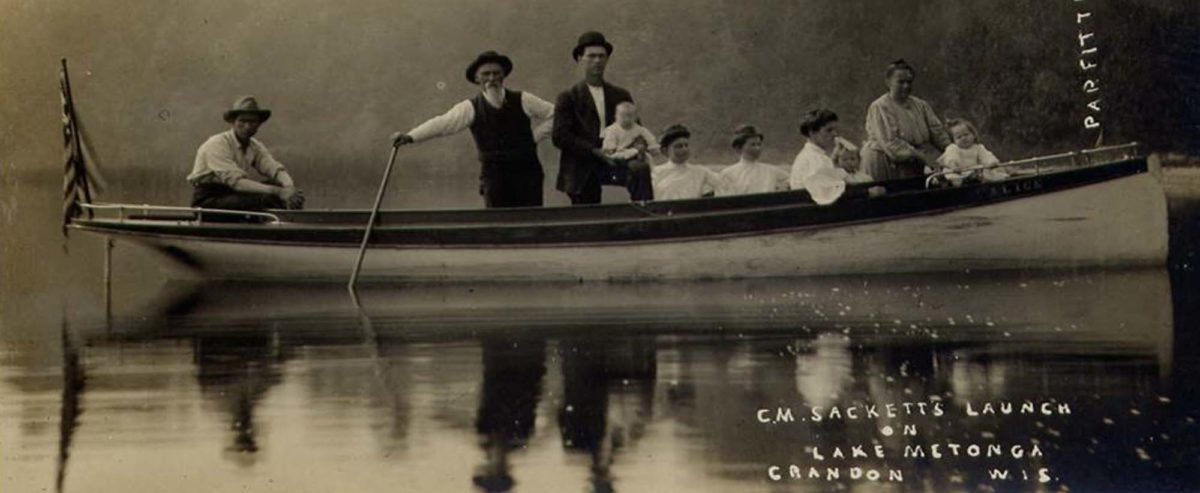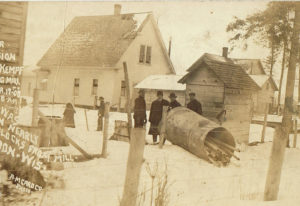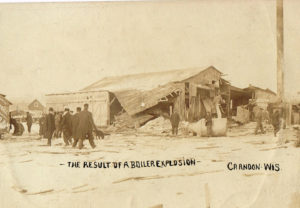Hello Forest County Residents!
I am revealing my archival discovery a day early because I am fortunate enough to attend the Northwoods Regional Historical Society conference tomorrow. I anticipate a lot of sharing of amazing objects and documents found by other historical societies and I will share any awesome finds I hear about from the other museum professionals.
The historical event I am writing about this week has come up several times in different types of archival material so I thought it was time to share it to see if anyone else out there has any more information on it. Because it is so prevalent in the historical record it must have been a major event in the town’s past. On March 17, 1908 around 8 am a loud blast woke the people of Crandon when a boiler exploded at the Kempf Planning Mill located at the crossing of the Northwest railroad and Lake Avenue. The boiler was catapulted nearly two blocks through the roof of the Emil Shoepke home and finally landed in a nearby yard. The engine room in which the boiler was located was completely destroyed and three men lost their lives. That morning the engine would not work so the owner of the mill, George Kempf, the engineer, George Minton, a common worker, William Hawkins, and a manager, Henry Kempf, went in to inspect the situation. As they were discussing the predicament the boiler exploded killing G. Kempf and Hawkins instantly and Minton dying hours later. Henry Kempf would live but sustained serious injures from which he would never recover. The Forest Republican claims that the mill owner G. Kempf was to blame because it had been long discussed by the workers that the boiler was not safe.
There are a few court cases relating to the boiler explosion in which the estate of George Kempf was suing the estate of George Minton to cover the damages of the boiler explosion. The George Kempf estate claimed that as the engineer and fireman Mr. Minton should have prevented the accident. The court ruled in favor of the estate of George Minton.
There were several different postcards printed with scenes from the boiler explosion that people from town would send family members as just another form of correspondence. One of the postcards had faint X’s drawn on it to show where they found the bodies of the men.
Mill conditions were less than ideal at the turn of the 20th century and similar stories can be found in every area of the country during this time period. Many men had little choice but to accept the dangers because that was the only place to seek employment and support their families.


